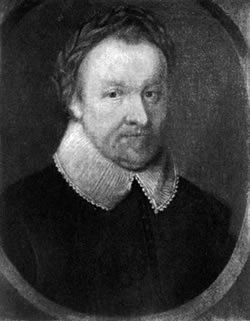|
READ THIS
This sonnet deals with two lovers who are apparently on the verge of permanent separation.
The poet is determined that, should they ever meet again, they will show no sign of their former love.
In the rhyming couplet, however, the poet reconsiders and makes a final plea to his love to reconcile.
 ABOUT THE POET
ABOUT THE POET
Michael Drayton was born in Warwickshire (England) in 1563. As a youth, he became a page to a certain
Sir Henry Goodeere, who saw to his education.
The poet fell in love with Sir Henry's daughter, Anne, the inspiration behind the poem "Idea" but he
clearly did not win her love as he died a bachelor.
Drayton settled in London in 1590 where he enjoyed a long career as a poet, with his first published work
appearing in 1591.
He was a favourite at the court of Queen Elizabeth but he was not successful in winning the favour of her
successor, King James I. A poem which he wrote complimenting the new king was ridiculed and his
service at the court was rejected.
Drayton died in London in December, 1631. He was buried in Westminster Abbey under a monument with
an epitaph by Ben Johnson, a famous English playwright and one of Drayton's friends.
Have you looked at the questions
in the right column?
|
TEST YOURSELF!
Read the left column and then answer
the following questions:
Explain in detail why this poem is classified as a Shakespearian sonnet. (4)

[Need help?]
A sonnet consists of 14 lines.
A Shakespearian sonnet consists of three quatrains with a concluding rhyming couplet. Each quatrain
(a verse of four lines) deals with a particular aspect.
|
"Nay I have done, you get no more of me."
- Identify the poet's TONE in the quotation. (2)

[Need help?]
The poet conveys a tone of determination and frustration.
|
- Explain the reason for his tone in the quotation. (4)

[Need help?]
The poet is emphatic about the relationship being at an end.
When he says "Nay", he has a no-nonsense approach towards his lover. It sounds as though they
have been discussing the relationship and he is not prepared to pursue it any further. He has had enough.
There is also a sense of frustration in the words "you get no more of me".
The poet is quite clearly speaking to his loved one and it sounds as though he has had enough of the
situation. He is not prepared to give any more of himself or devote any further time to the affair.
|
- The word "Nay" is a very old word. What is its modern equivalent? (1)

[Need help?]
"And I am glad, yea, glad with all my heart,
That thus so cleanly I myself can free."
- The word "Yea" means "Yes". What is Drayton's intention with the use of this
word? (2)

[Need help?]
This is another emphatic word. The poet uses it to highlight his feelings and what he is saying. He uses
it to express how adamant he is.
He makes it clear that what he has stated cannot be denied and he will not tolerate any opposition to what
he has said.
|
- Explain the irony in these lines from the poem. (3)

[Need help?]
The poet professes to be happy that he is so easily able to extricate himself from the relationship without
any regret or second thoughts. He is apparently able to walk away from the affair without any emotion.
The rhyming couplet, however, contradicts this cavalier attitude. Here he makes a plea to his lover to
reconsider the ending of the affair.
The poet, therefore, still has feelings for her and is reluctant to end the affair. He is not able to walk away
from the relationship as easily as he professes.
|
"Be it not seen in either of our brows"
- What is the poet's instruction to his lover? (2)

[Need help?]
When they meet again, no one should be able to see a trace of their former love in their faces. They
should not show any emotion should they meet again. The word "brows" refers to the face.
|
"Now at the last gasp of love's latest breath,
When his pulse failing, passion speechless lies,
When faith is kneeling by his bed of death,
And innocence is closing up his eyes."
- What is personification? (2)

[Need help?]
Personification is a form of comparison. An inanimate object (something which is not alive) is compared
with something human.
Something which is not human is made to sound as though it were human, e.g. The flower lifted its face
to the sun.
|
- Explain why the entire third quatrain contains examples of personification. (4)

[Need help?]
The poet refers to love as having breath; love has a pulse which is failing; passion is unable to speak;
faith is kneeling at its bed; innocence has eyes which are closing.
The entire quatrain compares love to a person who is on his deathbed; therefore, their love is dying just
as if a person is dying.
|
- The word "his" is used three times in the third quatrain. To whom or what does "his"
refer? (1)

[Need help?]
The word refers to Love. Love has been personified, hence the use of the possessive adjective.
|
|



